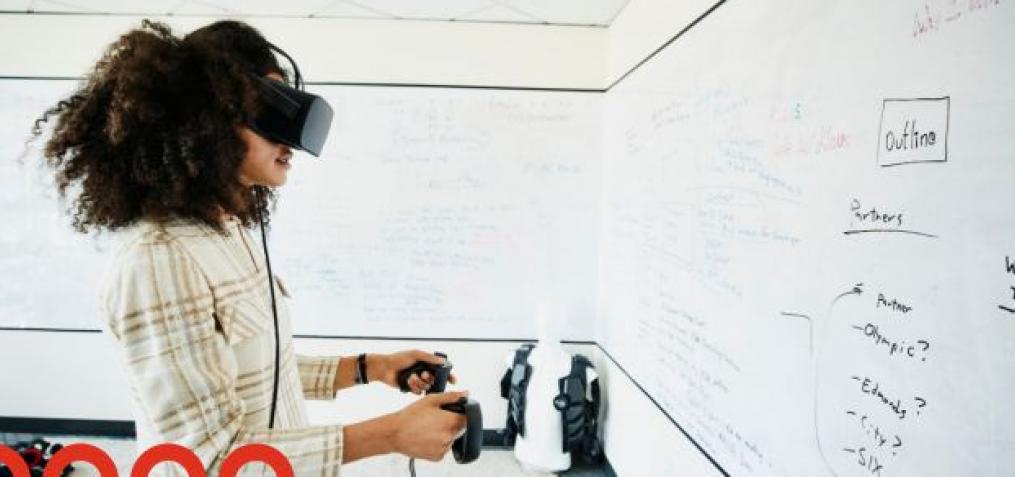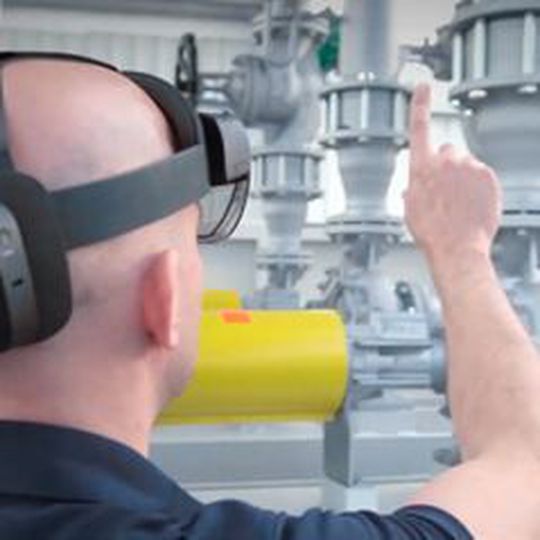What is augmented reality? Here’s what you need to know about the 3D technology
Augmented reality is an interactive 3D experience that combines a view of the real world with computer-generated elements.
– Augmented reality (AR) is an interactive 3D experience that combines a view of the real world with computer-generated elements.
– AR is different from VR in that VR is a completely self-contained computer environment while AR layers computer elements among real objects in real time.
– Here’s an introduction to AR and some common applications for the technology.
Augmented reality, commonly called AR, is an interactive 3D experience that combines a view of the real world with computer-generated elements in real time.
What you need to know about augmented reality, or AR
Augmented reality can figure in a number of ways, such as through AR goggles that combine a view of the immediate surroundings with computer graphics, or on a smartphone display that does the same thing using the phone’s camera to see and manipulate the world in front of the viewer.
How augmented reality differs from VR
They may seem like similar technologies – and certainly have similar abbreviations – but are fundamentally different. Virtual reality (VR) creates a completely synthetic virtual world within a headset. As the user, you are placed inside a 3D environment and can then move around and interact with completely computer-generated elements.
AR, on the other hand, keeps you grounded in the real world, and it overlays virtual elements as a visual layer within that environment. Immersive AR systems may combine the computer elements with real-world elements with convincing depth, perspective, and other rendering characteristics, and the AR system will understand the real environment well enough to be able to position relevant synthetic elements „in front of“ and „behind“ real objects and otherwise be able to interact with the real world in a meaningful way.
Applications for AR
AR’s value is in the way it can interpret, manipulate, and enhance the view of the real world in real time. For example, here are some ways in which AR can be used and is actively being used:
Retail: Perhaps the most important application of AR for most users will be in retail applications, notably „try before you buy.“ With more people shopping from home and less emphasis on public retail spaces, AR will allow consumers to see how products will look in their own homes before purchasing them. This can take the guesswork out of the buying process. There are already a number of apps, such as Wayfair, Houzz, and Ikea which let you place furniture and other products in your own real-world environments.
Mapping and navigation: The business directory app Yelp was an early adopter of AR with its now-discontinued Monocle feature. Monocle overlayed information about local businesses when viewing the immediate surrounding on your phone’s display. Callouts showed where nearby restaurants were located along with basic information such as how far away they were. This is a variation of the head-up display (HUD) – Mercedes-Benz, for example, is introducing a car that overlays navigation information on the windshield, helping you drive without looking away from the road.
Education: AR is finding its way into curriculum to enhance traditional learning methods. For example, textbooks can be marked with codes that, when scanned by a smartphone, can display additional content or 3D visualizations.
Maintenance and industry: AR has great potential in the coming years to significantly reduce reliance on physical technical manuals and improve productivity at the same time by overlaying relevant information in a worker’s field of view while performing maintenance or other tasks. Sufficiently advanced AR systems can not only understand context to show the right information, but help identify components and workflows using highlights and overlays. BMW, for example, is doing exactly that with a pilot program using AR on the assembly line.
Entertainment and social media: AR has a lot of potential for entertainment as well. Magic Leap, for example, is an AR development company that has reportedly spent more than $2.6 billion developing AR goggles and an AR technology platform, yet continues to be able to attract additional investments without having a commercial product. On a more accessible platform – smartphones – TikTok has recently introduced branded AR effects that users can add to their videos. This is no doubt just the beginning of a race to create ever-more compelling AR experiences that blur the line between real and virtual.
Quelle:
https://www.vrroom.buzz/vr-news/tech/everything-you-need-know-about-augmented-reality




